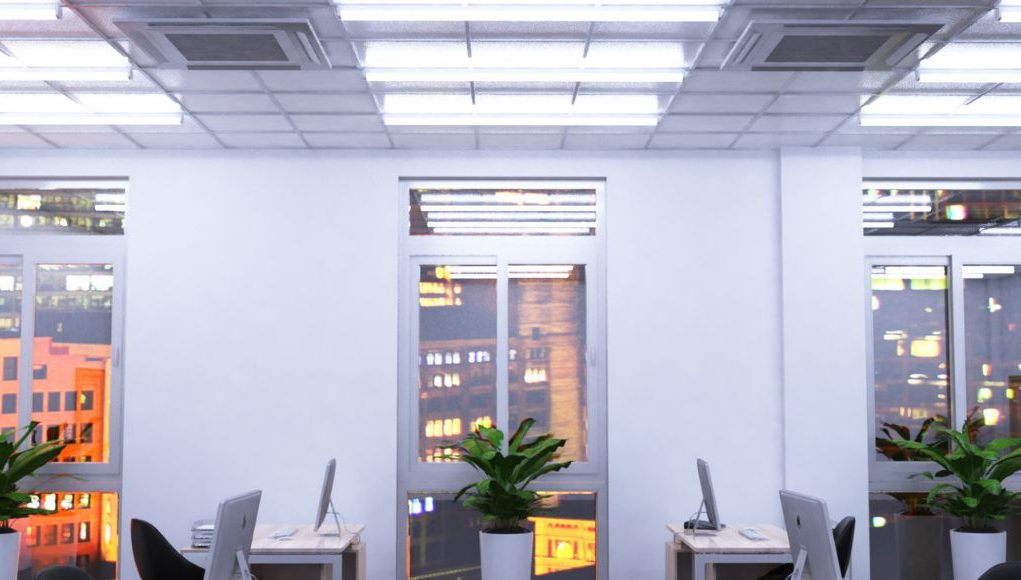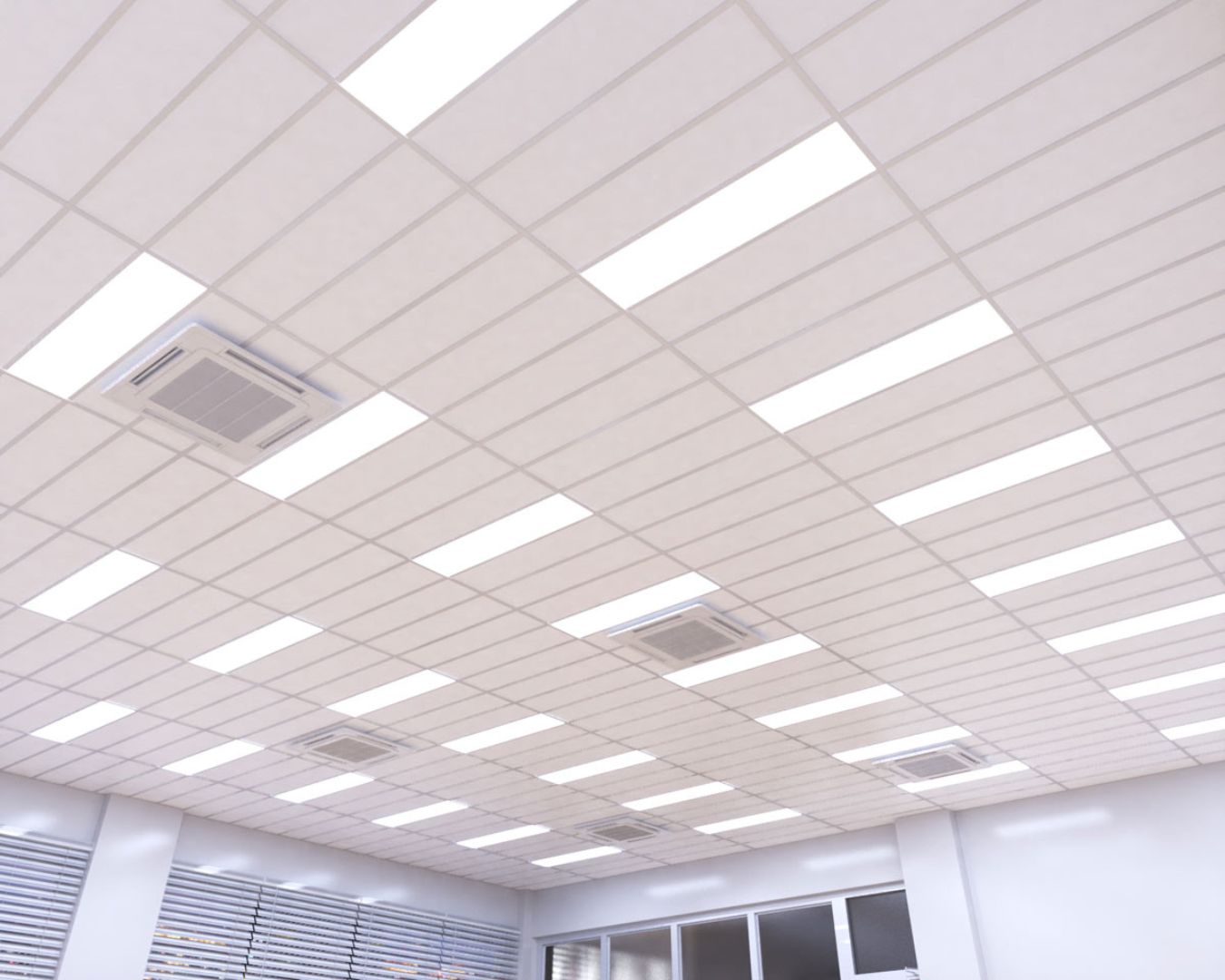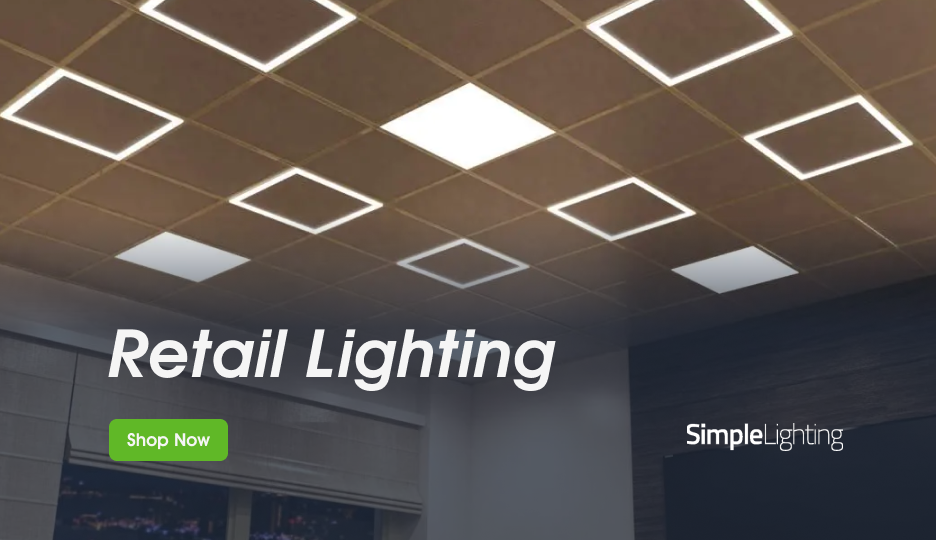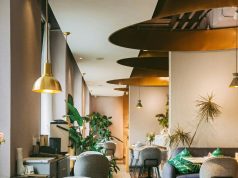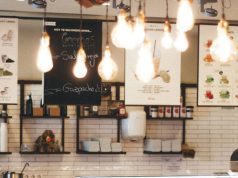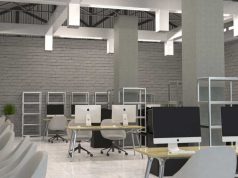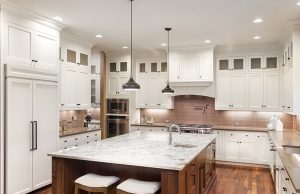Admit it: when you started your business, whenever the talk about “sustainability” was brought up, lighting might not always be the first thing that comes to mind.
And yet, it’s one of the fastest, simplest, and most effective areas to make a measurable impact, both for the planet and your energy savings.
While the first, and most obvious, step to sustainable lighting is swapping old, power-hungry bulbs with new energy-efficient LED fittings…
Smarter design, better control, and long-term thinking are equally important factors to consider.
In this guide, we’ll explore how UK businesses can illuminate their spaces sustainably while saving serious money.
Why Energy Efficiency in Lighting Matters
The UK’s energy costs are still higher than pre-2022 levels.
And with lightning accounting for up to 40% of a commercial building’s total energy use, inefficiency here quite literally burns money.
Businesses today face a triple challenge:
- Rising operational costs, especially from electricity.
- Corporate sustainability targets, often tied to Environmental, Social, and Governance (ESG) commitments or ISO 14001 standards.
- Pressure from customers and employees who expect visible, genuine action on contributing to environmental efforts.
That’s why energy-efficient lighting has already evolved from being a “nice-to-have” to a strategic business move.
The UK Government has set an ambitious target to reach net zero by 2050, adopting a “build back greener” strategy to decarbonise the UK economy through the implementation of specific policies.
Commercial buildings play a significant role in this strategy.
Upgrading to efficient lighting systems helps companies not only lower their carbon footprint but also enhance their Corporate Social Responsibility (CSR) profiles. This is an increasingly important factor for procurement and investor relations.
And let’s be honest: when you can save money while looking good doing it, it’s a win-win for all.
LED Technology & Its Advantages
Let’s start with the hero of modern lighting: (drumroll, please) the LED.
LEDs, or Light Emitting Diodes, have revolutionised the lighting industry, surpassing all traditional fittings with their incredible efficiency, long lifespan, and superior performance.
Compared to old halogen or fluorescent lamps, LEDs use up to 80% less energy and can last 20,000 to 50,000 hours.
But what LED actually brought were:
✅ Fewer replacements
✅ Less maintenance callouts, and
✅ Minimal disruptions to business operations.
More than just longevity, LEDs have brought high-quality lighting. They deliver excellent colour rendering, consistent brightness, and instant illumination (no more humming and flickering or “warming up” like old fluorescents).
Modern LED fittings can also be tuned for different colour temperatures, letting you create warmer, more welcoming environments in reception areas or crisp, cool lighting for detail-oriented workspaces.
From warehouse high bays to office downlights, LEDs outperform traditional lighting in almost every scenario.
And because they generate less heat (they don’t need to burn components to generate light), they can even reduce cooling loads; a small but meaningful energy benefit.
Fluorescent tubes and halogen floodlights have had their day. LEDs are the new kids on the block.
Smart Controls for Efficiency
Installing efficient lighting is one thing. Using it intelligently is another.
Take your lighting efficiency to the next level with smart lighting controls. With these, you can ensure that your lights are:
- Only working when needed.
- At the right brightness.
- In the right places.
Smart lighting is not even complicated. It’s simple, powerful, and increasingly affordable.
Motion and occupancy sensors — Perfect for corridors, washrooms, and storage areas. Lights only turn on when movement is detected and automatically switch off when the space is empty. This can save your business up to 30% of energy in low-traffic zones.
Daylight sensors — These adjust artificial lighting based on natural light levels. It maintains consistent illumination without wasting power when the sun’s doing the work for free.
Adaptive and timed controls — Smart systems can dim lights gradually, follow daylight schedules, or respond to programmed scenes (ideal for offices, retail stores, and hospitality settings).
Many systems today can be integrated with Building Management Systems (BMS) or controlled via smartphone apps. This centralises control and allows remote performance monitoring.
Combine intelligent control with LED efficiency, and you’re already winning in energy reduction for your business.
Design Strategies for Sustainable Lighting
Having the technology alone doesn’t guarantee sustainability. It’s a good design strategy that does.
The layout, materials, and colours of your space all play a part in how efficiently you can illuminate it.
Here are a few practical design tips that make a measurable difference:
1. Maximise daylight: Natural light is free, flattering, and healthy. Position workstations near windows and use light shelves or reflective blinds to distribute sunlight deeper into the room.
2. Use reflective surfaces: Light-coloured walls, ceilings, and floors can dramatically improve light spread. Dark colours just absorb light. Dominant light colours allow you to use lower illumination levels without sacrificing visibility.
3. Plan your layout carefully: Consider grouping lighting zones according to function. For example, separate ambient and task lighting. This allows selective control and reduces unnecessary lighting of low-use areas.
Having a light switch for every zone is ideal for better control.
4. Choose the right colour temperature: Cooler (5000-6000K) light is better for task-oriented zones like offices and workshops, while warmer (2700-3000K) light creates an inviting atmosphere that works for reception or hospitality spaces.
5. Don’t over-specify: More lumens aren’t always better. Not all areas of your business need bright light. What you should aim for is balanced lighting.
Excessive brightness wastes energy and creates glare. Follow the CIBSE and BS EN 12464-1 guidelines for determining the appropriate lux levels for each workspace type.
Here’s a bit of a reminder:
Lighting design isn’t just about aesthetics. It’s about striking a balance between visual comfort, function, and efficiency.
UK Government Schemes & Incentives
Here’s the good news: Going green comes with financial perks for your business.
The UK government and partner organisations offer several incentives, funding schemes, and tax reliefs for businesses investing in energy-efficient lighting.
Notably:
Enhanced Capital Allowance (ECA): While phased out in its original form, businesses can still claim tax relief on energy-saving investments through the Annual Investment Allowance (AIA) and other capital allowances.
The Carbon Trust Green Business Fund (and related support): Offers advice, tools, and sometimes direct funding for SMEs (small to medium-sized enterprises) that improve their energy efficiency.
Regional Schemes: There are initiatives that vary by location, such as the Business Energy Efficiency Scheme (BEES), which offers grants and loans to help cover the cost of energy-saving projects, including lighting upgrades.
Energy Technology List (ETL): Managed by the UK government, this list identifies energy-efficient equipment eligible for certain benefits, including some lighting systems.
Salix Finance: Provides interest-free loans for public sector energy projects, including LED retrofits.
With these schemes, you not only enhance the comfort and aesthetics of your business, but you also receive a payback for upgrading your lights!
See what you’re missing out on by not having energy-efficient lighting?
Maintenance & Lifecycle Cost Savings
Thanks to the introduction of efficient lighting (a.k.a. LED), maintenance and lifecycle costs are significantly reduced.
Let’s look at the comparison:
1. Traditional lighting systems often require regular lamp changes, ballast replacements, and cleaning.
2. LEDs, in contrast, have exceptionally long service lives, often 10–15 years in commercial use, making maintenance and replacements hardly ever done.
What that means for your business is: fewer ladder climbs, fewer disruptions, and fewer purchases.
And it’s not just about lifespan either. LED light fixtures offer long-lasting performance.
While fluorescent lamps degrade and shift colour, quality LED fittings provide consistent light levels and visual comfort.
Also, couple an LED’s efficiency with robust housing and minimal heat output, and you’re looking at lighting that’s perfect for environments like warehouses, factories, and retail.
In short, switching to LED lights is almost always a winning move for any business.
Measuring & Reporting Energy Savings
A management guru by the name of Peter Drucker once said, “If you can’t measure it, you can’t manage it.”
Going with that logic, anything that can be measured can be managed.
The good news? Light can be measured.
And for sustainability-minded businesses, tracking and reporting lighting performance is vital, not only for internal benchmarking but also for ESG and CSR reporting purposes.
Here’s how to do it effectively:
- Establish Key Performance Indicators (KPIs): Set a target for energy consumption, particularly for your lighting.
- Maximise monitoring tools: Smart lighting systems and BMS integrations can automatically record usage data, providing real-time dashboards and historical trends.
- Compare before and after: When upgrading, conduct a baseline energy assessment. Then track consumption for 6 to 12 months post-installation to quantify actual savings.
- Convert Energy Savings to Carbon Savings: If you really want to see your environmental impact, what better way is there than to convert your kWh savings into CO₂ reductions?
Nothing sells better than a sustainability story backed by numbers.
Common Pitfalls in “Green” Lighting Claims
This should have been a disclaimer, but not all “eco-friendly” lighting claims are created equal.
With sustainability becoming a key selling point, some products or suppliers indulge in greenwashing.
It’s using vague or misleading environmental language to make their offerings sound better than they are.
Here’s what you may be doing wrong:
1. Not checking markings and certifications. Recognised standards such as CE, UKCA, ENEC, BS (British Standards), and RoHS are some of the markings you need to check in your lights.
2. Believing unbacked data. Numbers without context are often marketing fluff. Always ask: “Who tested this? What’s the baseline for these numbers?”
3. Choosing cost over quality. Some “cheap green” imports may use lower-quality LEDs that degrade quickly or flicker.
4. Not considering end-of-life disposal. Even energy-efficient lighting has its end. Sustainability means taking this fact into consideration. Select manufacturers that support WEEE-compliant recycling and circular practices.
A truly sustainable lighting solution isn’t just energy-efficient; it’s high quality, responsibly sourced, and verifiably long-lasting.
Conclusion
Sustainable lighting is more than just swapping old bulbs.
It’s a holistic approach that combines efficient technology, intelligent controls, thoughtful design, and measurable outcomes.
The benefits of being a sustainability-oriented business?
- Lower energy bills
- Reduced carbon footprint
- Improved lighting quality and comfort
- Enhanced reputation and compliance with CSR or ESG
And the roadmap for achieving a sustainable lighting system for your business?
Switch to LEDs — Add smart controls — Optimise design — Monitor results
Here at Simple Lighting, we help businesses find lighting solutions that strike a balance between efficiency, performance, and sustainability.


